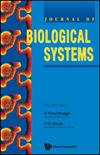CROSSING THE DESERT: A MODEL FOR ALIEN SPECIES INVASION CONTAINMENT OR TO LESSEN HABITAT DISRUPTION EFFECTS
IF 1.5
4区 数学
Q3 BIOLOGY
引用次数: 1
Abstract
In this paper we present a model for a possible containment way of alien species invasions. It relies on the application of one or more stripes on the ground for which the survival conditions are harsher. After reviewing a number of possible threats for biodiversity that are the main motivation of this study, as well as a few instances of landscape disruption, we present a reaction–diffusion model and report the simulations results in various conditions. The inferences indicate that the diffusion process can be delayed, through the use of multiple obstacles, thereby allowing the possibility of taking alternative measures in order to contain the invasion, at least for some time. We discuss the diffusion delay in terms of the level of hostility, the length and the number of consecutive repetitions of the harsh environments. Comparisons on the parameter space show that the harshness and structural characteristics of the stripes are intertwined in a non-trivial way. Alternatively, the model can be used to ascertain the situations in which a population living in a territory can still thrive when its habitat is broken by artifacts, whether human-built or resulting from natural causes. Examples of this sort are presented in the final discussion.穿越沙漠:遏制外来物种入侵或减少栖息地破坏影响的模型
在本文中,我们提出了一个可能遏制外来物种入侵的方法的模型。它依赖于在生存条件更恶劣的地面上应用一个或多个条纹。在回顾了作为本研究主要动机的生物多样性可能面临的一些威胁,以及一些景观破坏的例子后,我们提出了一个反应-扩散模型,并报告了各种条件下的模拟结果。推断表明,通过使用多种障碍物,扩散过程可以推迟,从而有可能采取替代措施,至少在一段时间内遏制入侵。我们根据敌对程度、恶劣环境的持续时间和连续重复次数来讨论扩散延迟。在参数空间上的比较表明,条纹的粗糙度和结构特征以一种非平凡的方式交织在一起。或者,该模型可以用于确定当栖息地被人为建造或自然原因造成的文物破坏时,生活在一个地区的人口仍然可以茁壮成长的情况。这类例子将在最后的讨论中介绍。
本文章由计算机程序翻译,如有差异,请以英文原文为准。
求助全文
约1分钟内获得全文
求助全文
来源期刊
CiteScore
2.80
自引率
12.50%
发文量
31
审稿时长
1 months
期刊介绍:
The Journal of Biological Systems is published quarterly. The goal of the Journal is to promote interdisciplinary approaches in Biology and in Medicine, and the study of biological situations with a variety of tools, including mathematical and general systems methods. The Journal solicits original research papers and survey articles in areas that include (but are not limited to):
Complex systems studies; isomorphies; nonlinear dynamics; entropy; mathematical tools and systems theories with applications in Biology and Medicine.
Interdisciplinary approaches in Biology and Medicine; transfer of methods from one discipline to another; integration of biological levels, from atomic to molecular, macromolecular, cellular, and organic levels; animal biology; plant biology.
Environmental studies; relationships between individuals, populations, communities and ecosystems; bioeconomics, management of renewable resources; hierarchy theory; integration of spatial and time scales.
Evolutionary biology; co-evolutions; genetics and evolution; branching processes and phyllotaxis.
Medical systems; physiology; cardiac modeling; computer models in Medicine; cancer research; epidemiology.
Numerical simulations and computations; numerical study and analysis of biological data.
Epistemology; history of science.
The journal will also publish book reviews.

 求助内容:
求助内容: 应助结果提醒方式:
应助结果提醒方式:


